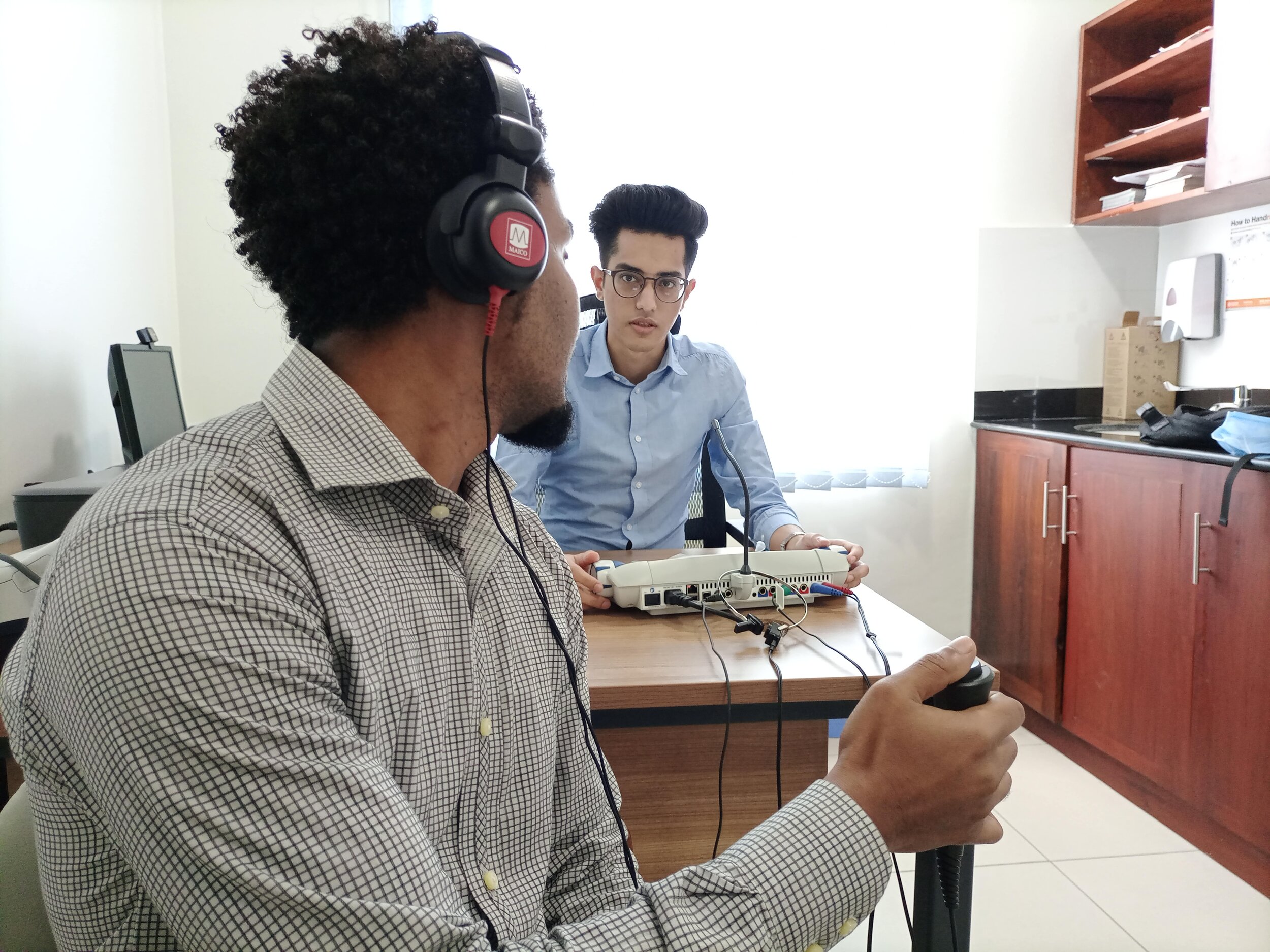Hearing Assessments
Our core focus being delivery of quality hearing care, we provide comprehensive adult, pediatric, and newborn evaluation hearing assessments. We’ll use an extensive list of tests to get an idea of your hearing which you can observe below.
Video
Otoscopy
All patients initially undergo otoscopic examination to check the external ear, and rule out abnormalities such as earwax, ear-drum perforations, discharge, infections, foreign bodies, etc. A state-of-the-art video otoscope can be used to give you a chance to view your ear.
Pure-tone Audiometry
A painless, non-invasive hearing test used to measure a person’s ability to hear different sounds, of varying loudness and frequency (pitch). This test can be conducted in a variety of ways dependent on the age of the patient. In most situations, the patient will wear earphones and respond to a range of sounds to obtain a measure of their hearing in each ear.
Tympanometry (Immittance)
This is a test of middle ear function, and can be used to detect problems such as fluid build-up, middle ear infections, eustachian tube dysfunction, perforations, etc. It is a simple, painless test and can inform decisions about management of middle ear conditions.
Otoacoustic Emissions (OAEs)
This objective test, most notably used as a screening test for newborns, measures the function of outer hair cells within the cochlea and can indicate whether one’s hearing is normal/near-normal or requires further investigation. OAE screening is widely used in newborn hearing screening programs, now a standard evaluation of newborns in most developed countries.
Image from GSI
Diagnostic Auditory Brainstem Response (ABR)
An electrophysiological test of the inner ear and auditory brainstem pathway, it provides valuable information about a patient’s hearing particularly when one is unable to perform standard audiometry/behavioural tests. It is typically used in children, babies, and others who may have a difficult time with conventional testing. We perform this test by placing electrodes on the head, and headphones over the ears. The headphones play a specific sound and the electrodes record the response of the nerves and brain centres to that sound. It is usually performed when the patient is asleep or resting. The ABR is also known as auditory evoked potentials (AEP) or brainstem evoked response audiometry (BERA).





